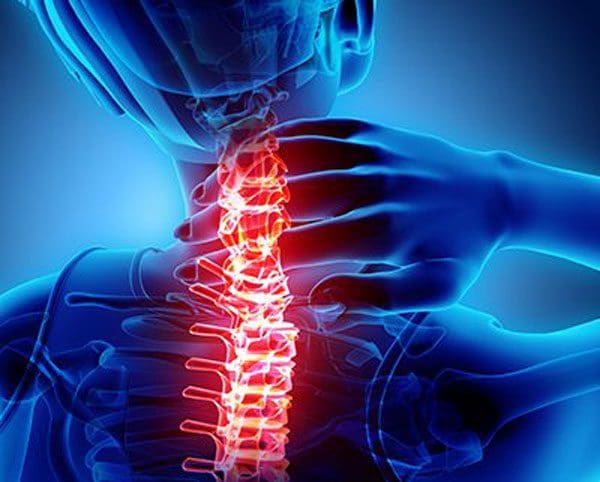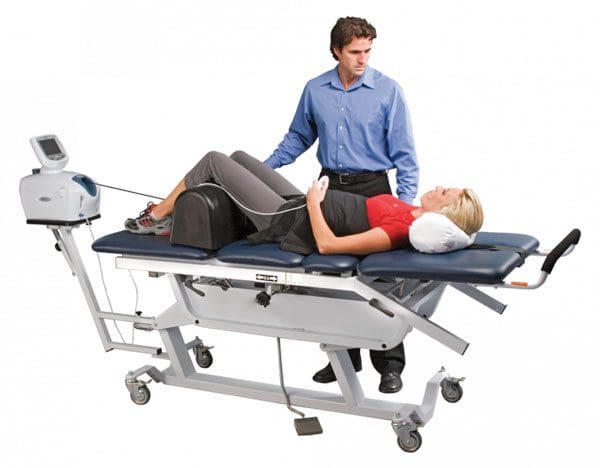Mechanical Vs. Manual Cervical Traction The Chiropractic Difference

Mechanical vs. Manual Cervical Traction
Mechanical force is typically applied through a series of weights or a fixation device and requires the patient to stay in bed or is placed in a halo vest. The techniques and methodologies can vary, but the objectives/results are the same. The utilization is developed on a case-by-case basis and the chiropractor’s diagnosis/recommendations. Many chiropractors implement both mechanical and manual traction approaches. Choosing the right traction plan comes from a thorough examination, medical history, and understanding of each method’s strengths.Traction approach
The difference between mechanical and manual traction is simple. Mechanical traction is directed by the use of machines, weights, and pulleys, while manual traction is performed by a professional chiropractor. With mechanical traction, an individual’s head is cradled into a sling, then positioned at the optimal position for the adjustment. The sling is counterweighted to hold the head/neck in that position, leveraging mechanical pressure and affecting change.
Techniques and methodologies
Mechanical and manual traction can have similar results, but both offer different benefits based on the individual. Mechanical traction is a hands-free technique for decompression that allows chiropractors to focus on the patient’s needs when working on complex cases. This method is more applicable for severe cases, where the traction could last for 20-30 minutes. Mechanical traction is helpful when teaching healthy posturing. Manual traction benefits come from the control that a chiropractor has over the technique. With the manual pulling, the chiropractor can increase or decrease the countering force. A hands-on approach enables chiropractors to feel the spinal adjustments, and understand the effects of the traction.
The proper form of traction
The overall ability of traction to decompress the spine makes it a valuable approach to treat various conditions. The exact nature of the condition determines whether mechanical or manual traction will be used along with the recommendation/treatment plan of the chiropractor. Injury Medical Chiropractic Clinic is committed to implementing the best approach for spinal correction for every patient. Mechanical and manual traction are just two adjustment modalities.Body Composition Health
Resistance Training For Everyone
Even if not an athlete resistance training is important for functional fitness. Functional strength training attempts to emulate the physiological demands of real day-to-day activities. Traditional strength training focuses on specific muscle groups during the exercise, while functional training focuses on whole muscle groups to train the body for daily responsibilities. Individuals might believe they are too old for resistance training. But research shows the benefits of improving an individual’s functional fitness level, specifically for older adults. Functional training resistance exercises and bodyweight movements can help the body become stronger, more flexible, more agile, and better equipped to handle day-to-day responsibilities. Plus, it can help with injury prevention.Reference
Afzal, Rabia et al. “Comparison between Manual Traction, Manual Opening technique, and Combination in Patients with cervical radiculopathy: Randomized Control Trial.†JPMA. The Journal of the Pakistan Medical Association vol. 69,9 (2019): 1237-1241.Post Disclaimers
Professional Scope of Practice *
The information herein on "Mechanical Vs. Manual Cervical Traction The Chiropractic Difference" is not intended to replace a one-on-one relationship with a qualified health care professional or licensed physician and is not medical advice. We encourage you to make healthcare decisions based on your research and partnership with a qualified healthcare professional.
Blog Information & Scope Discussions
Welcome to El Paso's Premier Wellness and Injury Care Clinic blog, where Dr. Alex Jimenez, DC, FNP-C, a board-certified Family Practice Nurse Practitioner (FNP-C) and Chiropractor (DC), presents insights on how our team is dedicated to holistic healing and personalized care. Our practice aligns with evidence-based treatment protocols inspired by integrative medicine principles, similar to those found on dralexjimenez.com, focusing on restoring health naturally for patients of all ages.
Our areas of chiropractic practice include Wellness & Nutrition, Chronic Pain, Personal Injury, Auto Accident Care, Work Injuries, Back Injury, Low Back Pain, Neck Pain, Migraine Headaches, Sports Injuries, Severe Sciatica, Scoliosis, Complex Herniated Discs, Fibromyalgia, Chronic Pain, Complex Injuries, Stress Management, Functional Medicine Treatments, and in-scope care protocols.
Our information scope is limited to chiropractic, musculoskeletal, physical medicine, wellness, contributing etiological viscerosomatic disturbances within clinical presentations, associated somato-visceral reflex clinical dynamics, subluxation complexes, sensitive health issues, and functional medicine articles, topics, and discussions.
We provide and present clinical collaboration with specialists from various disciplines. Each specialist is governed by their professional scope of practice and their jurisdiction of licensure. We use functional health & wellness protocols to treat and support care for the injuries or disorders of the musculoskeletal system.
Our videos, posts, topics, subjects, and insights cover clinical matters, issues, and topics that relate to and directly or indirectly support our clinical scope of practice.*
Our office has reasonably attempted to provide supportive citations and has identified the relevant research studies or studies supporting our posts. We provide copies of supporting research studies available to regulatory boards and the public upon request.
We understand that we cover matters that require an additional explanation of how they may assist in a particular care plan or treatment protocol; therefore, to discuss the subject matter above further, please feel free to ask Dr. Alex Jimenez, DC, APRN, FNP-BC, or contact us at 915-850-0900.
We are here to help you and your family.
Blessings
Dr. Alex Jimenez DC, MSACP, APRN, FNP-BC*, CCST, IFMCP, CFMP, ATN
email: coach@elpasofunctionalmedicine.com
Licensed as a Doctor of Chiropractic (DC) in Texas & New Mexico*
Texas DC License # TX5807
New Mexico DC License # NM-DC2182
Licensed as a Registered Nurse (RN*) in Texas & Multistate
Texas RN License # 1191402
ANCC FNP-BC: Board Certified Nurse Practitioner*
Compact Status: Multi-State License: Authorized to Practice in 40 States*
Graduate with Honors: ICHS: MSN-FNP (Family Nurse Practitioner Program)
Degree Granted. Master's in Family Practice MSN Diploma (Cum Laude)
Dr. Alex Jimenez, DC, APRN, FNP-BC*, CFMP, IFMCP, ATN, CCST
My Digital Business Card






 Again, I Welcome You.
Again, I Welcome You.
Comments are closed.